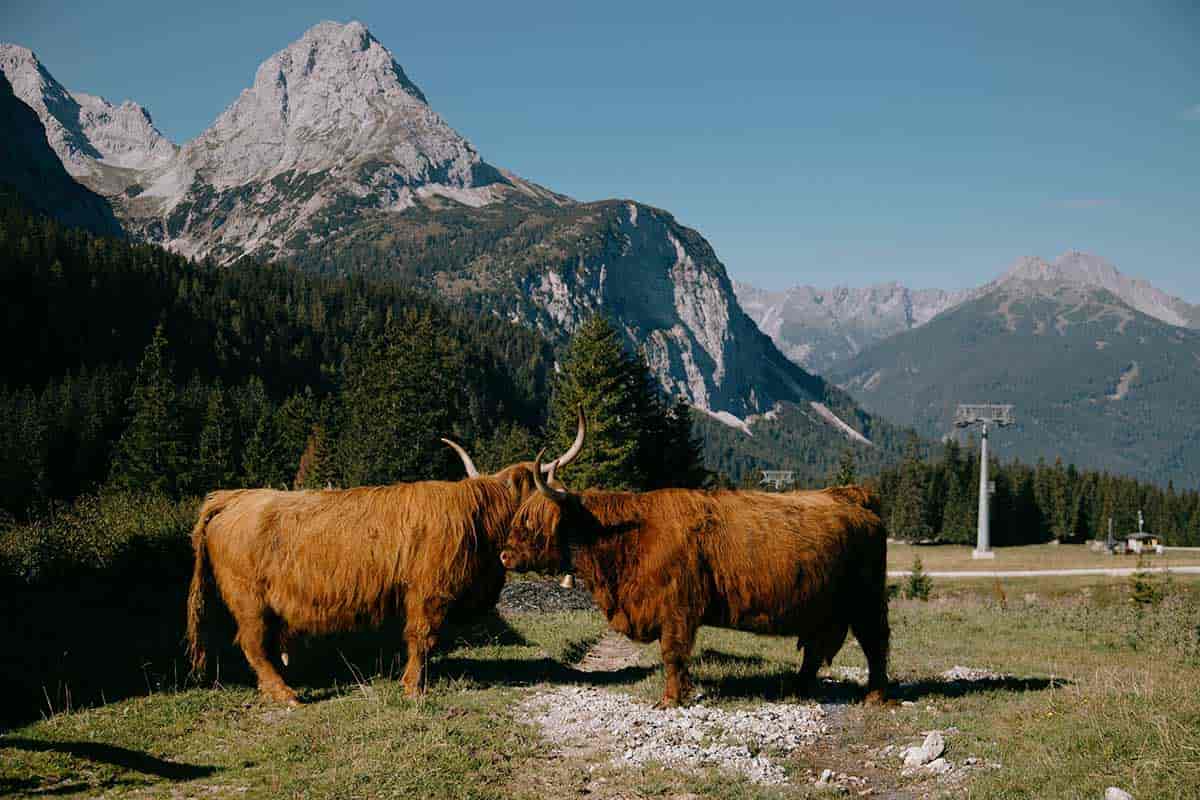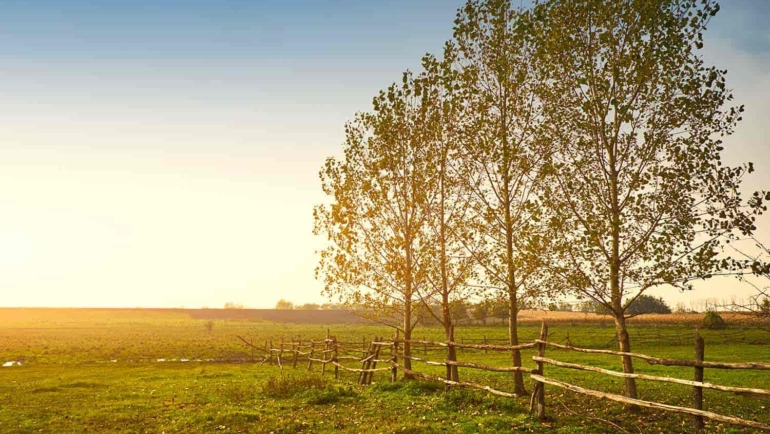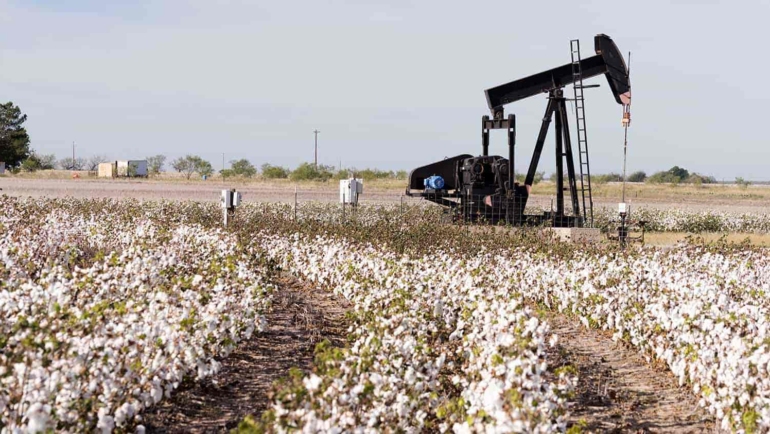Livestock is a broad term used to describe farm animals such as cows and chickens. These livestock animals have special conditions they need to be met from their land to survive. What types of land are livestock typically raised on then?
As a general rule, livestock are raised on farms and ranches. Those raised on farms rely on specific diets due to limited space, while those on ranches rely on grazing. There are several other differences between the two land types as well.
Whether you are looking to own livestock or are just curious about how they are raised, we can help you understand the difference between a farm and a ranch. Although often used interchangeably, these two words mean very different things. Read on to find out about the differences between raising livestock on a farm versus a ranch and what the owners have to do to make it possible.
What Kind of Land Are Livestock Typically Raised On?
Livestock need space and food from their land to keep them growing happy and healthy. The type of animal will determine what exactly they need from their land. However, most livestock are generally raised on the same kind of land.
As a whole, most livestock are raised on agricultural land. This land is devoted to either the development of crops or livestock. It can include grassy fields and pastures. There are several different ways agricultural land can look.
How the farmer/rancher intends to raise their animals will determine the type of agricultural land they will need. However, they can make almost any land suitable for raising animals as long as they know how to properly manage it and it has a water source of some sort to keep the livestock hydrated.
The 2 Kinds of Land Livestock Are Typically Raised On
Agricultural land that is used to raise livestock can be split into two kinds of land: farms and ranches. These two types of livestock land have some surprising differences and similarities. How people plan to raise their livestock and the type of livestock will determine which land type will work best for them.
Livestock Farms
Livestock farms consist of a plethora of land that has the primary function of producing agriculture. Most livestock farms rely heavily on producing crops to feed their livestock that are kept in pastures. These livestock often have very strict diets to get the most out of the animal.
For example, many cattle require food consisting of a special mix of soybean, silage, and wheat. They also require grass and hay to maintain a healthy diet. Since they exist in limited space pastures, farmers have to cultivate their cropland to provide the proper nutrition for them.
Dairy Farms
A popular type of farm is a dairy farm. These farms have to find the perfect balance of nutrition to maximize their milk output. Their livestock live in enclosed pastures and are milked daily to provide an income for the farmer.
You can find a multitude of livestock types that can be milked on a dairy farm including:
- Dairy cows
- Donkeys
- Goats
- Yaks
All animals have different dietary needs, so the farmer will need to grow different crops to maximize the milk output. For example, donkeys need things like carrots and haylage. So, the farmer will need environmental conditions that are good for the health of the crops they need to grow for their specific livestock.
The crops on dairy farms all have optimal growing conditions that the land needs to meet. This means the farmer needs to be sure they are properly caring for the land each year to feed the animals. If they have poor land management, their fields will yield fewer crops and their animals will have no food since they are in enclosed pastures.
Livestock Farms Keep Animals
On livestock farms, the animals are often kept for a long period of their life to continue to produce goods. For example, dairy animals continue to produce milk throughout their life. When they dry off, they are sent to pasture until they calve and can be milked again. Laying hens are also maintained to continue to produce eggs.
However, there are some exceptions to this general rule. Meat chickens are sold for their meat yearly. However, the land they live on is still considered farmland. It is farmland because the chickens are just a small part of the many crop fields necessary to feed them. These chickens are very rarely free-range and living off the land.
Hog farms are another exception to this rule. Pigs are raised for their meat, but they live off the crop that the farmer cultivates for them. They have special diets perfectly crafted to optimize their weight potential.
Livestock Farms Rely on Good Soil
As we have talked about, the main aspect of a livestock farm that makes it a farm is the number of crops grown. A farmer’s main concern is their crop yield. Therefore, their main focus is on their soil quality.
They will rotate crops and add fertilizers to keep the soil in good condition. A farm on bad soil land will not succeed because the crops will not grow to feed the animals.
Livestock Ranches
Livestock ranches are a type of farm. It is important to note that not all farms are ranches, but all ranches are farms. What sets them apart is that a ranch is typically much bigger than a farm and focuses mostly on the optimal health of their animals. They do not have a plethora of fields devoted to cropland that they attend to, although they may have a few.
Their animals are primarily raised in vast open grazing land. The animals are strategically herded throughout different parts of the ranch by ranchers on horseback and four-wheelers. They live off the land instead of the special diets that farmland livestock requires.
Types Of Animals on Ranches
Typically, when we think of ranches, we think of cows and sheep. However, many livestock types live on ranches, including:
- Alpacas
- Bison
- Emus
All the animals on a ranch are typically raised to be sold each year for their meat and the products that can be made from their bodies. However, some animals like sheep and alpacas are raised for their wool and kept year-round. How well the animals will thrive on the ranch is dependent upon the type of land they are on and how well the rancher can care for them.
Ranchers Need Good Water Sources
A big concern for ranchers is having good water sources for their livestock on every part of the ranch. As the livestock moves from place to place, there needs to be some sort of water supply to keep them hydrated in each location. With a bunch of miles between general areas, this can be tough.
That is why it is good to have ranches with rivers that flow throughout the property. Along with that, ranchers need to be good at collecting rainwater for areas that may not have a natural source of water. The collected rainwater can be trucked out each day to where the livestock are to ensure they are always hydrated.
Soil Management Is Important to Ranchers
We mentioned how soil quality is important to farmers growing crops. However, it is also paramount to ranchers who need to ensure their pastures grow for their livestock.
The livestock will naturally fertilize the pastures with their manure. However, this is not enough. The ranchers must move the livestock to the next location when necessary, so they do not “burn out” the pastures. In other words, if the livestock stay in one place for too long, they can overgraze the pasture and prevent it from growing properly in the future.
Ranchers rely solely on the pastures to provide their livestock with all the nutrition they need to survive. Therefore, they need to know about the different soil types on their land and their output potential. Not all soil types will have the same output, meaning livestock cannot stay in some areas of the ranch as long as they can in others.
Ranch Land Make Up Is Important
The land make up is also important to ranchers depending on the type of livestock they plan to raise there. For example, land that has over 30% rock coverage will likely be avoided by cattle. They will not graze it. Nor will they eat areas with a slope greater than 10% if other flatter options are available. Meaning you will be missing out on valuable grazing opportunities if you plan to have cattle as your only livestock grazing there.
However, ranchers who plan to keep sheep as livestock do not need to worry about steep or rough typography because they are more adapted to that land type. Therefore, they will make great use of a steep slope in terms of grazing.
Brush management is also important to a lot of ranchers. Brush can decrease the amount of grazable land for most livestock, meaning it needs to be controlled to maximize land use.
Can You Have Livestock on Your Regular Property?
Many people wish to have livestock but do not have the money to buy a farm or ranch. As a result, they often question whether they can have livestock on their regular property.
There are local, state, and federal regulations concerning farming livestock. Whether you can have livestock on your property will depend on your local and state laws, as well as the location of the property and type of livestock.
Local Zoning Boards Rules on Livestock
The first place you should check to determine if you can have livestock on your regular property is with your local zoning board. They can answer your questions, and if they cannot, they can direct you towards the people that can.
Laws will vary from city to city and will be different for different types of animals. For example, you may be allowed chickens in your yard but not cattle.
What you do with the animals is also important. If you plan to sell the products produced by them (i.e., chicken eggs), then there may be state and federal regulations you need to comply with as well.
Livestock Farming and Ranching
Individuals that rely on grazing as their main source of nutrition for their livestock are usually ranchers. Their land is vast and meadowy. Individuals that have a smaller amount of land that is mostly dedicated to crops to provide nutrients for their livestock are usually farmers. Both types of land require lots of time and dedication to preserving for their livestock to flourish.
If you are looking into owning livestock of your own, be sure to know whether farmland or ranch land will work best for you and the type of livestock you intend to raise.




